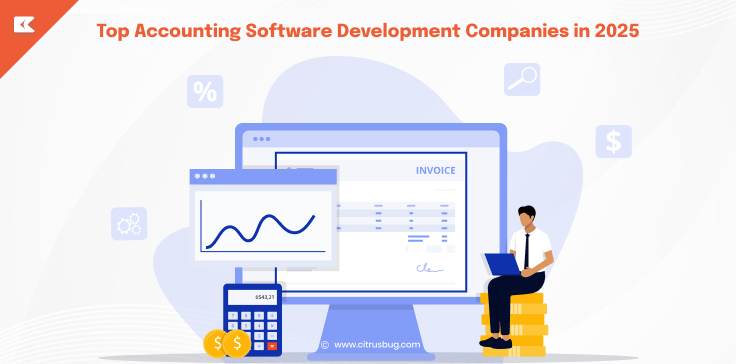PHP Usage Statistics: Trends & Market Landscape in 2025
- June 30, 2024
-
8370 Views
- by Ishan Vyas
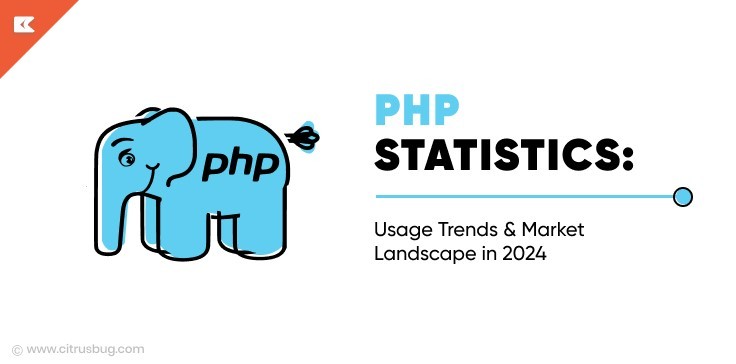
Introduction
PHP’s influence on web development is undeniable. It has been a cornerstone technology for over two decades, powering everything from simple blogs to complex enterprise applications. But in today’s dynamic landscape of frameworks and languages, many wonder: Is PHP dead, or is PHP still relevant in 2024? This article delves into the data, exploring current usage trends and other important PHP statistics to assess the current state and future prospects of the PHP language.
PHP’s Important Stats & Usage
1. Despite the emergence of newer frameworks, PHP remains a dominant force in web development. PHP is still used by over 79.2% of all websites. These PHP statistics functions highlight the sheer volume of existing PHP codebases and the ongoing need for skilled developers to maintain them. For companies looking to expand their technical teams, it’s crucial to hire PHP developers who can efficiently manage and innovate within these extensive PHP environments.
(Source: kinsta)
2. PHP usage statistics further illustrate its widespread adoption. WordPress, a CMS built on PHP is used by 62.7% of all the websites whose content management system we know. This is 43.4% of all websites. This reinforces PHP’s critical role in the web ecosystem and the demand for PHP in 2024. Additionally, framework usage statistics indicate that developers increasingly adopt modern PHP frameworks, enhancing the language’s functionality and appeal.
(Source: W3Techs)
3. However, the way PHP is deployed is evolving. The same survey indicates a shift towards cloud-based solutions. 48.84% of respondents reported using on-premises deployments, while 39.34% leverage cloud platforms like Amazon Web Services (AWS). This trend reflects the growing preference for scalability and flexibility offered by cloud computing.
(Source: Zend)
4. Regarding PHP versions, the industry is moving towards adopting the latest advancements. PHP 8.2 leads the pack at 57.17%, followed closely by PHP 8.1 (53.67%) and PHP 7.4 (47.73%). This focus on newer versions ensures developers can use improved performance, security features, and modern language constructs.
(Source: Zend)
(Image Source: Zend)
PHP usage Statistics demonstrate its extensive use and vital function across many industries. Let’s have a glance at all its usage in depth –
1. PHP Data Processing & Analysis Statistics
Beyond basic web development, PHP plays a significant role in data processing and analysis. Its ability to handle large datasets efficiently makes it a valuable tool for businesses of all sizes. Studies suggest that over 60% of companies leveraging PHP utilize it for tasks.
PHP integrates seamlessly with databases like MySQL, enabling developers to build robust data-driven applications. According to a leading web technology research firm, PHP is used by 76.2% of all websites with a known server-side programming language.
(Source: W3Techs)
2. PHP E-commerce Applications Market Share
The E-commerce industry is booming, with the market projected to reach $57.22 trillion by 2032 from USD 14.14 trillion in 2022, expanding at a CAGR of 15% during the forecast period 2023 to 2032. To compete with giants like Amazon, businesses need a powerful solution.
PHP empowers e-commerce websites by enabling personalization and swift development. While there are closed-source platforms like Shopify, PHP remains a popular choice for building scalable and high-performing e-commerce applications due to its flexibility and cost-effectiveness. While exact PHP market share data can be difficult to pinpoint, industry experts estimate that custom-built PHP e-commerce solutions account for a significant portion of online stores, likely somewhere around 25-30%.
(Source: Precedence research)
(Image Source: precedence research)
3. PHP Content Management Systems (CMS) Usage
PHP’s dominance in the CMS market is undisputed, with WordPress alone accounting for 43.4% of all websites i.e. 62.7% of the CMS market share on the internet. This makes PHP the backbone of the most popular content management systems, including Joomla and Drupal.
PHP developers can leverage a PHP statistics library to analyze usage patterns within CMS platforms. This tool provides insights into user interactions, content performance, and system stability, aiding developers in optimizing PHP-based CMS implementations for better user experience and operational efficiency.
(Source:w3techs)
4. PHP Web Development Usage
PHP is widely used in web application development, with prominent examples like Slack utilizing it for its backend infrastructure.
PHP’s efficiency in handling real-time communication and data synchronization makes it a go-to choice for developing interactive web applications. Thus, PHP is employed by Millions of web applications, highlighting its versatility and robustness for PHP Customers, to get insights into 88,170,173 websites. We recognize the existence of 29,626,634 live websites, as well as 58,543,539 historical PHP sites and 553,615 websites in India.
(Source: BuiltWith)
Popular Websites Using PHP
Many famous companies with high-traffic websites utilize PHP, including:
-
Facebook
-
Mozilla
-
OpenAI
-
Tumblr
-
Vimeo
-
Wikipedia
-
WordPress.com
-
WordPress.org
-
Zoom.us
5. PHP API Development Statistics
PHP’s ability to integrate with databases and other web technologies makes it suitable for API development. It is commonly used to create RESTful APIs that facilitate data exchange between a web server and a client.
PHP frameworks such as Lumen and Slim are specifically designed for building APIs. Lumen, for example, is favored for its lightweight nature and performance. There are over 5,000 GitHub stars for Lumen, indicating a robust community and active usage.
(Source: GitHub Lumen Repository)
PHP frameworks like Laravel include tools for building APIs & have gained significant traction. Laravel is the most popular framework of PHP, with over 1.5 million live websites using it as of 2023. The latest Laravel statistics reveal a continuous growth trend, emphasizing its pivotal role in PHP development.
(Source: BuiltWith)
6. PHP Command-Line Scripting Usage
The PHP community provides various command-line tools and scripts to streamline development and administrative tasks. PHP’s versatility allows it to be used beyond web development, supporting – automation, integration, testing, and deployment functions effectively, leveraging its command-line interface (CLI) capabilities.
PHP is used for command-line scripting primarily through tools like Composer and PHP Unit. Composer is a dependency manager for PHP and is widely used, with over 150 million package installs monthly
(SOURCE: Packagist)
7. PHP Server-side scripting Statistics
As discussed earlier based on the W3Techs report’s data, over 76% of websites with a known server-side language leverage PHP. This directly reflects PHP’s core function as a server-side scripting language for dynamic web page generation.
(Source: w3techs)
8. PHP Legacy Web Applications Usage
Precise figures for legacy PHP applications are unavailable. However, W3Techs reports that over 41% of websites using PHP rely on version 7, which suggests a sizable portion of older websites might still be functioning with PHP.
(Source: w3techs)
9. PHP Community Stats
While not a concrete usage statistic, Stack Overflow, a prominent developer Q&A platform, indicates 1,465,959 PHP-related questions. This indirectly suggests PHP’s popularity among the community of web developers.
(Source: Stack overflow)
Conclusion: Leveraging PHP Insights for Informed Decisions
The insights gleaned from analyzing PHP statistics usage trends along with its framework Laravel usage statistics & PHP market share in 2024 provide valuable information for developers, businesses, and decision-makers. Understanding the various applications and usage patterns of PHP can help guide project planning, technology selection, and resource allocation.
As PHP continues to evolve and adapt to new technologies, its relevance in the web development landscape remains strong. By leveraging these insights, a PHP development company can make data-driven decisions that align with current market trends and ensure the success of their web development projects.





 SaaS Development
SaaS Development Web Application Development
Web Application Development Mobile Application Development
Mobile Application Development Custom Software Development
Custom Software Development Cloud Development
Cloud Development DevOps Development
DevOps Development MVP Development
MVP Development Digital Product Development
Digital Product Development Hire Python Developers
Hire Python Developers Hire Django Developers
Hire Django Developers Hire ReactJS Developers
Hire ReactJS Developers Hire AngularJS Developers
Hire AngularJS Developers Hire VueJS Developers
Hire VueJS Developers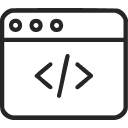 Hire Full Stack Developers
Hire Full Stack Developers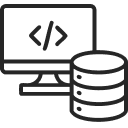 Hire Back End Developers
Hire Back End Developers Hire Front End Developers
Hire Front End Developers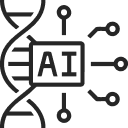 AI Healthcare Software Development & Consulting
AI Healthcare Software Development & Consulting Healthcare App Development
Healthcare App Development EHR Software Development
EHR Software Development Healthcare AI Chatbot Development
Healthcare AI Chatbot Development Telemedicine App Development Company
Telemedicine App Development Company Medical Billing Software Development
Medical Billing Software Development Fitness App Development
Fitness App Development RPM Software Development
RPM Software Development Medicine Delivery App Development
Medicine Delivery App Development Medical Device Software Development
Medical Device Software Development Patient Engagement Software Solutions
Patient Engagement Software Solutions Mental Health App Development
Mental Health App Development Healthcare IT Consulting
Healthcare IT Consulting Healthcare CRM Software Development
Healthcare CRM Software Development Healthcare IT Managed Services
Healthcare IT Managed Services Healthcare Software Testing services
Healthcare Software Testing services Medical Practice Management Software
Medical Practice Management Software Outsourcing Healthcare IT Services
Outsourcing Healthcare IT Services IoT Solutions for Healthcare
IoT Solutions for Healthcare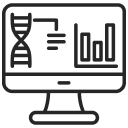 Medical Image Analysis Software Development Services
Medical Image Analysis Software Development Services Lending Software Development Services
Lending Software Development Services Payment Gateway Software Development
Payment Gateway Software Development Accounting Software Development
Accounting Software Development AI-Driven Banking App Development
AI-Driven Banking App Development Supply Chain Management Software Development
Supply Chain Management Software Development Fleet Management Software Development
Fleet Management Software Development Warehouse Management Software Development
Warehouse Management Software Development LMS Development
LMS Development Education App Development
Education App Development Inventory Management Software Development
Inventory Management Software Development Property Management Software Development
Property Management Software Development Real Estate CRM Software Development
Real Estate CRM Software Development Real Estate Document Management Software
Real Estate Document Management Software Construction App Development
Construction App Development Construction ERP Software Development
Construction ERP Software Development






